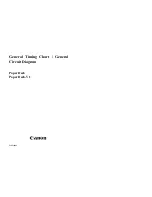
5
6. ADVICES AND INSTRUCTION FOR MOUNTING
T
HESE INSTRUCTIONS ARE INTENDED FOR TECHNICAL AND SPECIALIZED PERSONNEL
.
T
HUS BASIC SAFETY AND WORKING TECHNIQUES ARE NOT DISCUSSED
.
To guarantee perfect function and facilitate installation, please note the following
indications and warnings:
Check that the cable length is sufficient to link to the station or control apparatus.
The eventual junction for extending the cable must be perfectly sealed with a
cable of the same type and colours.
Warning.
Check that the power supply is the same as those indicated on
technical data applied to the device.
To keep efficient and have a perfect functioning we suggest to clean the sensitive
part at least any 6 months or any time is dirty due to smog, leaves, impurity, etc.
Advices for sensor installation:
1. Choose the most suitable position where place the rain sensor. It has to be put outside
in direct contact with weathering.
2. The sensor is placed slightly tilted (~ 20 °) to facilitate the flow of water, in a position
that does not have shelters to the fall of rain. Place it under the trees is not
recommended because it alters the natural weather event.
3. Support can be of 2 types depending from attack surface; in both cases is suggested
to make the cable exit below:
o
Surface flat / tilted – with high resistance adhesive and suitable for weather or
fixed with a screw;
o
Fix support such as rod or similar where to apply the metal bracket – provided –
with a screw.
4. Complete cable system and electrical connection to the station or control and feeding
apparatus following the schema on next page. Bind with one or more clamps the cable
to make it integral with the supporting structure.
5. If radio version is used, check rain sensor memorization has been done on control
device (Kato ADV Radio).
6. Make a functional test.
To test a rain sensor is sufficient to wet (pour or spray water) on sensitive
part of it; the sensor transmits the signal of “wet sensor”. LED indicators of
various apparatus should light.
7. ELECTRICAL CONNECTIONS
Electrical connections should be carried out in compliance with safety rules and
keeping in mind the meaning of various symbols and colours of the wires of the
feeding cable.
Sensor can work with any station unit or apparatus able to interpret its signal,
therefore the connections of the power cord are called in the specific instructions
of the central or equipment.
The table below shows the caption of any wires and the wiring diagram.
6
Caption of each wire - NRS1:
1 - R
ED
(+) connected to +12/24V;
2 - B
LACK
(-) connected to -12/24V;
3 - B
LUE
(N.O. contact);
4 - P
URPLE
(N.C. contact);
5 - G
REEN
(Common).
Caption of each wire - NRS1/R:
1 - R
ED
(+) connected to +12/24V;
2 - B
LACK
(-) connected to -12/0V;
3 - B
LUE
DON’T CONNECT;
4 - P
URPLE
DON’T CONNECT;
5 - G
REEN
DON’T CONNECT.
7.1. Replace P2 rain sensor on N series units
In the case of useNRS1 rain sensor to replace the old P2 on N series stations,
during connection phase operate as follows:
R
ED
wire connected at the place of
W
HITE
wire;
B
LACK
and
G
REEN
wires connected together at the place of
Y
ELLOW
wire;
B
LUE
wire connected at the place of
B
LUE
wire;
P
URPLE
wire has to be insulated and not connected.
8. DIP-SWITCHES SELECTION
In the sensor base, covered by a black cap, there is the access to dip-switches to
program the sensor which give the possibility of modifying status and sensitiveness. Dip-
switches meaning is the following:
DIP 1
DIP2
SENSITIVENESS
OFF
OFF
Maximum sensitiveness
ON
OFF
Medium-high sensitiveness
OFF
ON
Medium-low sensitiveness
ON
ON
Minimum sensitiveness
The sensor leaves the factory with the maximum sensitiveness set.
9. LED SIGNALS
Rain sensor has 2 signalling LED that indicate the functioning status.
B
-
B
LUE
led flashing indicates that the sensor is fed.
R
-
R
ED
led lit fix indicates “wet sensor”; it has active command.
10. RADIO CONTROL FOR CLOSING DUE TO RAIN (NRS1R)
The NRS1R radio rain sensor is a device capable of controlling the KATO ADV RADIO
motor remotely through a 433.92MHz signal.






















